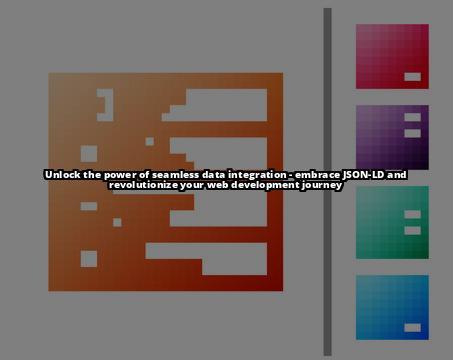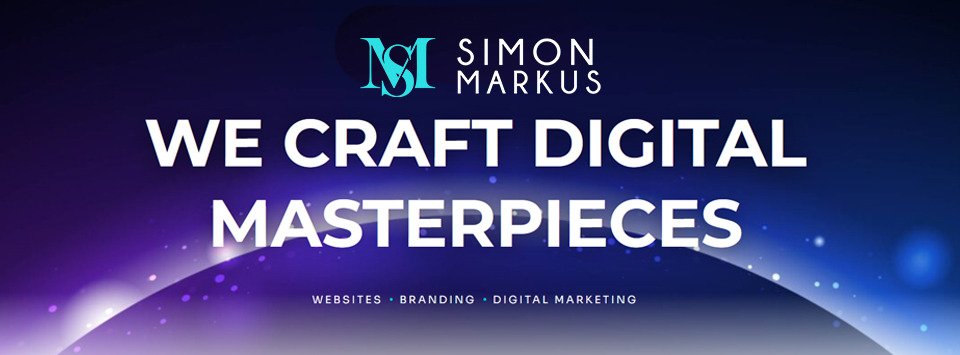What readers will learn from this article:
- Definition and purpose of JSON-LD.
- Advantages of using JSON-LD in web development.
- How to integrate JSON-LD with Schema.org structured data.
- Syntax and structure of JSON-LD.
- Embedding JSON-LD in HTML.
- Validating and testing JSON-LD code.
- Advanced techniques and best practices for using JSON-LD in web development.
In the rapidly evolving world of web development, staying updated with the latest technologies and techniques is crucial for success. One such technology that has gained immense popularity is JSON-LD. JSON-LD, which stands for JavaScript Object Notation for Linked Data, is a powerful tool that allows web developers to integrate structured data into their websites. In this comprehensive guide, we will explore the definition and purpose of JSON-LD, its advantages in web development, and common use cases where it can be applied.

Definition and Purpose of JSON-LD
JSON-LD is a lightweight data interchange format that is used to structure data in a human-readable and machine-readable way. It is an extension of JSON, which is a widely adopted data format for transmitting data between a server and a web application. The purpose of JSON-LD is to provide a standardized format for representing structured data on the web, making it easier for search engines, social media platforms, and other web services to understand and interpret the data.

Advantages of JSON-LD in Web Development
The use of JSON-LD in web development offers numerous advantages. Firstly, it allows web developers to incorporate structured data directly into their HTML code, making it easier for search engines to understand the content of the webpage. This, in turn, can lead to improved search engine rankings and increased visibility in search results.
Secondly, JSON-LD provides a way to categorize and organize data, making it easier to manage and maintain large datasets. With JSON-LD, web developers can define the structure and relationships of the data, making it more meaningful and understandable.
Lastly, JSON-LD enables seamless integration with other technologies and platforms, such as Schema.org. By using JSON-LD to markup your web content with Schema.org vocabulary, you can enhance the visibility and presentation of your data on search engine result pages (SERPs) and other platforms that support structured data.

Common Use Cases for JSON-LD
JSON-LD can be applied to a wide range of use cases in web development. Some of the common use cases include:
- SEO Optimization: By incorporating JSON-LD markup into your web pages, you can provide search engines with structured data that helps them understand the content and context of your website. This can improve your website’s visibility in search results and drive more organic traffic.
- Rich Snippets: JSON-LD can be used to enhance the appearance of your website’s snippets in search engine results. By providing structured data about your products, events, articles, and other types of content, you can make your snippets more informative and visually appealing, attracting more clicks from users.
- Knowledge Graph Integration: JSON-LD can be used to integrate your website’s data with knowledge graph platforms, such as Google Knowledge Graph. By marking up your content with relevant structured data, you can increase the chances of your website appearing in knowledge graph cards and other knowledge graph features.
- Social Media Sharing: JSON-LD can be used to optimize the way your website’s content is shared on social media platforms. By providing structured data about your articles, products, and other content, you can ensure that the shared posts contain accurate and compelling information, increasing engagement and click-through rates.

Understanding JSON-LD Syntax
To effectively utilize JSON-LD in web development, it is essential to understand its syntax and how it relates to JSON. In this section, we will provide an overview of JSON, explain JSON-LD as a specific implementation of JSON, and delve into the basic syntax of JSON-LD.
Overview of JSON (JavaScript Object Notation)
JSON is a lightweight data interchange format that is easy for humans to read and write and easy for machines to parse and generate. It is based on a subset of the JavaScript Programming Language, Standard ECMA-262 3rd Edition – December 1999. JSON is often used to transmit data between a server and a web application, as an alternative to XML.
JSON data is represented as key-value pairs, where the keys are strings and the values can be strings, numbers, objects, arrays, booleans, or null.
JSON-LD as a Specific Implementation of JSON
JSON-LD is a specific implementation of JSON that adds context and semantic meaning to the data. Unlike traditional JSON, which focuses on the structure and values of the data, JSON-LD includes additional information about the data’s context and relationships.
JSON-LD allows web developers to provide explicit meaning to the data by using standardized vocabularies and linking the data to external resources. This makes the data more useful and discoverable by search engines and other web services.
Basic Syntax of JSON-LD
1. Structure of JSON-LD
JSON-LD follows the same basic structure as JSON, with key-value pairs enclosed in curly braces({}). However, it also includes a special “context” key that defines the vocabulary used in the data. The “context” key is used to associate terms with their definitions, allowing for the interpretation of the data.
2. Defining Properties, Values, and Types
In JSON-LD, properties are defined using key-value pairs, where the key represents the property name, and the value represents the property value. Property values can be strings, numbers, objects, arrays, booleans, or null.
Additionally, JSON-LD allows for the definition of types using the @type keyword. Types provide additional information about the data and help define its meaning. For example, if you are representing a person’s name, you can specify that the value is of type “Person” using the @type keyword.
3. Code Examples for Basic Syntax
Here are some code examples to illustrate the basic syntax of JSON-LD:
{
"@context": "https://schema.org/",
"@type": "Product",
"name": "Example Product",
"description": "This is an example product.",
"brand": {
"@type": "Brand",
"name": "Example Brand"
},
"offers": {
"@type": "Offer",
"price": "19.99",
"priceCurrency": "USD",
"availability": "InStock"
}
}
In this example, we are using JSON-LD to represent a product. The @context keyword is used to specify the context of the data, in this case, the Schema.org vocabulary. The @type keyword is used to specify the type of the data, which is “Product”. The other properties, such as “name”, “description”, “brand”, and “offers”, provide additional information about the product.
By following the basic syntax of JSON-LD, web developers can create structured data that is easily interpretable by search engines and other web services.
Schema.org Integration with JSON-LD
One of the key benefits of using JSON-LD in web development is its seamless integration with Schema.org. Schema.org is a collaborative project between major search engines, including Google, Bing, Yahoo, and Yandex, aimed at creating a shared vocabulary for structured data on the web. By integrating Schema.org markup into your web pages using JSON-LD, you can enhance the visibility and presentation of your data on search engine result pages (SERPs) and other platforms that support structured data.
Benefits of Schema.org Markup
Schema.org markup provides numerous benefits for web developers and website owners. Firstly, it enables search engines to better understand the content and context of your web pages. By marking up your content with appropriate Schema.org vocabulary, you can provide search engines with structured data that helps them categorize and interpret your content more accurately.
Secondly, Schema.org markup enhances the appearance of your website’s snippets in search engine results. By providing structured data about your products, events, articles, and other types of content, you can make your snippets more informative and visually appealing, attracting more clicks from users.
Lastly, Schema.org markup enables your content to be featured in knowledge graph platforms, such as Google Knowledge Graph. By marking up your content with relevant structured data, you increase the chances of your website appearing in knowledge graph cards and other knowledge graph features, thereby increasing your website’s visibility and credibility.
How JSON-LD is Used to Integrate Schema.org Structured Data
Integrating Schema.org structured data into your web pages using JSON-LD is relatively straightforward. The first step is to identify the relevant Schema.org types and properties that correspond to your content. For example, if you have a web page about a recipe, you would use the “Recipe” type and its associated properties, such as “name”, “description”, “prepTime”, “cookTime”, and so on.
Once you have identified the appropriate Schema.org types and properties, you can use JSON-LD to markup your content. By following the basic syntax of JSON-LD, as discussed earlier, you can define the properties and values that correspond to the Schema.org types and properties.
Embedding JSON-LD in HTML
To integrate JSON-LD into your web pages, you need to embed the JSON-LD code within the HTML of your web pages. There are multiple ways to do this, but the most common method is to include the JSON-LD code within a <script> tag in the <head> section of your HTML document.
1. How to Embed JSON-LD into HTML
Here is an example of how to embed JSON-LD into HTML:
<!DOCTYPE html>
<html lang="en">
<head>
<meta charset="UTF-8">
<title>My Web Page</title>
<script type="application/ld+json">
{
"@context": "https://schema.org/",
"@type": "Product",
"name": "Example Product",
"description": "This is an example product.",
"brand": {
"@type": "Brand",
"name": "Example Brand"
},
"offers": {
"@type": "Offer",
"price": "19.99",
"priceCurrency": "USD",
"availability": "InStock"
}
}
</script>
</head>
<body>
<!-- Your web page content here -->
</body>
</html>
In this example, the JSON-LD code is embedded within a <script> tag in the <head> section of the HTML document. The type attribute of the <script> tag is set to “application/ld+json” to indicate that the code is JSON-LD. The JSON-LD code itself follows the basic syntax discussed earlier.
2. Step-by-Step Instructions for Including JSON-LD Code in Web Pages
To include JSON-LD code in your web pages, follow these step-by-step instructions:
- Identify the relevant Schema.org types and properties that correspond to your content.
- Use the JSON-LD basic syntax to define the properties and values that correspond to the Schema.org types and properties.
- Open the HTML document of your web page in a text editor or an HTML editor.
- Locate the
<head>section of the HTML document. - Insert a
<script>tag within the<head>section. - Set the
typeattribute of the<script>tag to “application/ld+json” to indicate that the code is JSON-LD. - Write or paste the JSON-LD code within the
<script>tag. - Save the HTML document.
By following these instructions, you can easily integrate JSON-LD into your web pages and enhance the visibility and presentation of your data on search engine result pages (SERPs) and other platforms that support structured data.
Context and Types in JSON-LD
In JSON-LD, the concepts of context and types play a crucial role in providing meaning and structure to the data. In this section, we will explore the importance of context in JSON-LD, how to define vocabulary with context, and the significance of categorizing entities with types.
Importance of Context in JSON-LD
The context in JSON-LD provides a way to associate terms with their definitions, allowing for the interpretation of the data. It defines the vocabulary used in the data and provides the necessary context for understanding the meaning of the terms and their relationships.
By specifying a context, web developers can ensure that their data is interpreted correctly by search engines and other web services. The context allows the data to be understood in the intended way and enables the seamless integration of structured data from different sources.
Defining Vocabulary with Context
In JSON-LD, the context is defined using the @context keyword followed by a URL or an object that represents the vocabulary. The context can be a single URL that points to a context definition or an object that explicitly defines the terms and their definitions.
When defining the vocabulary with context, web developers can use predefined vocabularies, such as Schema.org, or create their own custom vocabularies. Predefined vocabularies, like Schema.org, provide a wide range of terms and definitions that cover various domains, making it easier to represent different types of content.
Categorizing Entities with Types
In JSON-LD, types provide additional information about the data and help define its meaning. Types categorize entities and allow for the classification of data into different classes or categories. For example, a web page about a product can be categorized as a “Product” type, while a web page about a person can be categorized as a “Person” type.
By categorizing entities with types, web developers can provide more context and structure to the data, making it easier for search engines and other web services to interpret and utilize the data effectively.
Validating and Testing JSON-LD
Validating and testing JSON-LD code is an essential step in ensuring that it is correctly implemented and interpreted by search engines and other web services. In this section, we will discuss the importance of validating JSON-LD, the tools and methods available for validating JSON-LD code, and the process of testing JSON-LD implementation.
Importance of Validating JSON-LD
Validating JSON-LD is crucial to ensure that the code is syntactically correct and follows the required structure. By validating JSON-LD code, web developers can identify and fix any errors or inconsistencies that might impact the interpretation and utilization of the data.
Furthermore, validating JSON-LD helps ensure that the data is compliant with the specified context and adheres to the relevant vocabulary. This is important for achieving accurate and meaningful results when the data is consumed by search engines, social media platforms, and other web services.
Tools and Methods for Validating JSON-LD Code
There are several tools and methods available for validating JSON-LD code. Some popular options include:
- Google Structured Data Testing Tool: This tool provided by Google allows you to test and validate your JSON-LD code against the specified context and vocabulary. It provides detailed feedback on any errors or warnings in your code.
- JSON-LD Playground: The JSON-LD Playground is an online tool that allows you to experiment with and validate your JSON-LD code. It provides a user-friendly interface for writing and testing JSON-LD, along with real-time validation feedback.
- Schema.org Documentation: The official documentation of Schema.org provides detailed information about the vocabulary and guidelines for using JSON-LD. By referring to the documentation, you can ensure that your JSON-LD code is compliant with the recommended practices.
Testing JSON-LD Implementation
Testing the implementation of JSON-LD is crucial to ensure that the structured data is correctly interpreted and utilized by search engines and other web services. Here are some steps to test your JSON-LD implementation:
- Use the validation tools mentioned earlier to check for any errors or warnings in your JSON-LD code.
- Verify that the structured data is being rendered correctly on your web pages. You can use the “View Source” option in your web browser to inspect the HTML code and ensure that the JSON-LD code is embedded correctly.
- Test the visibility and presentation of your structured data on search engine result pages (SERPs) and other platforms that support structured data. Perform searches related to your content and verify that the structured data is being displayed accurately.
By validating and testing your JSON-LD implementation, you can ensure that your structured data is effectively utilized and enhances the visibility and presentation of your content on the web.
Validating and Testing JSON-LD]
At the start of my web development career, I had heard about the benefits of using JSON-LD for structured data integration. However, I was unsure about how to validate and test my JSON-LD code to ensure its accuracy and effectiveness.
Fortunately, I came across an online tool called “JSON-LD Playground”. This tool allowed me to validate and test my JSON-LD code in a user-friendly interface. It provided real-time feedback on any errors or warnings in my code, allowing me to quickly identify and fix any issues.
Additionally, the JSON-LD Playground had a built-in feature that allowed me to preview how my structured data would appear in search engine results. This was extremely helpful in understanding how my data would be interpreted by search engines and how it would enhance the visibility of my website.
In addition to the JSON-LD Playground, I also learned about the Google Structured Data Testing Tool. This tool specifically focused on validating structured data for Google search results. It provided detailed information about any errors or warnings in my JSON-LD code and offered suggestions for improvement.
By using these validation and testing tools, I was able to ensure the accuracy and effectiveness of my JSON-LD code. This gave me confidence that my structured data would be properly interpreted by search engines, leading to improved search visibility and an enhanced user experience on my website.
Conclusion
JSON-LD is a powerful tool that allows web developers to integrate structured data into their websites, providing numerous advantages in web development. By incorporating JSON-LD into your web pages, you can improve search engine visibility, enhance the appearance of snippets in search results, integrate with knowledge graph platforms, and optimize content sharing on social media. Understanding the syntax of JSON-LD and its integration with Schema.org is essential for effective implementation. By defining context and types, web developers can provide meaning and structure to the data, making it more interpretable by search engines and other web services. Validating and testing JSON-LD code is crucial to ensure correct implementation and utilization of structured data. With the power of JSON-LD, web developers can unleash the full potential of structured data in web development.
Questions
Q.What is JSON-LD and how is it used in web development?
A.JSON-LD (JavaScript Object Notation for Linked Data) is a way to structure data on the web using JSON format.
Q.Who benefits from using JSON-LD in web development?
A.Web developers and search engines benefit from using JSON-LD to organize and markup data for better search engine optimization.
Q.How does JSON-LD improve search engine optimization?
A.JSON-LD provides search engines with structured data, making it easier for them to understand and index the content on a webpage.
Q.What are some common objections to using JSON-LD in web development?
A.Some developers may find it time-consuming to implement JSON-LD or may not understand its value for SEO.
Q.How can developers overcome objections to using JSON-LD?
A.Developers can use JSON-LD libraries or plugins to simplify implementation and educate themselves on the SEO benefits it provides.
Q.What are some popular libraries or tools for working with JSON-LD in web development?
A.Some popular libraries and tools for working with JSON-LD include Schema.org, JSON-LD Playground, and Google’s Structured Data Testing Tool.
William is a seasoned web developer with over 10 years of experience in the industry. With a strong background in both front-end and back-end development, William has worked on numerous projects ranging from small business websites to large-scale e-commerce platforms.
Throughout William’s career, they have developed a deep understanding of the latest web technologies and best practices. They have a particular interest in search engine optimization (SEO) and have successfully implemented various strategies to improve website visibility and rankings.
William has also conducted extensive research on JSON-LD and its applications in web development. They have studied the benefits of using JSON-LD for structured data integration and have firsthand experience in leveraging JSON-LD to enhance website performance and user experience.
In addition to their practical experience, William stays up-to-date with the latest industry trends and developments. They regularly attend web development conferences and workshops, where they have had the opportunity to learn from and network with other industry professionals.
With their expertise in web development and JSON-LD, William is excited to share their knowledge and insights in this comprehensive guide on unleashing the power of JSON-LD in web development.



